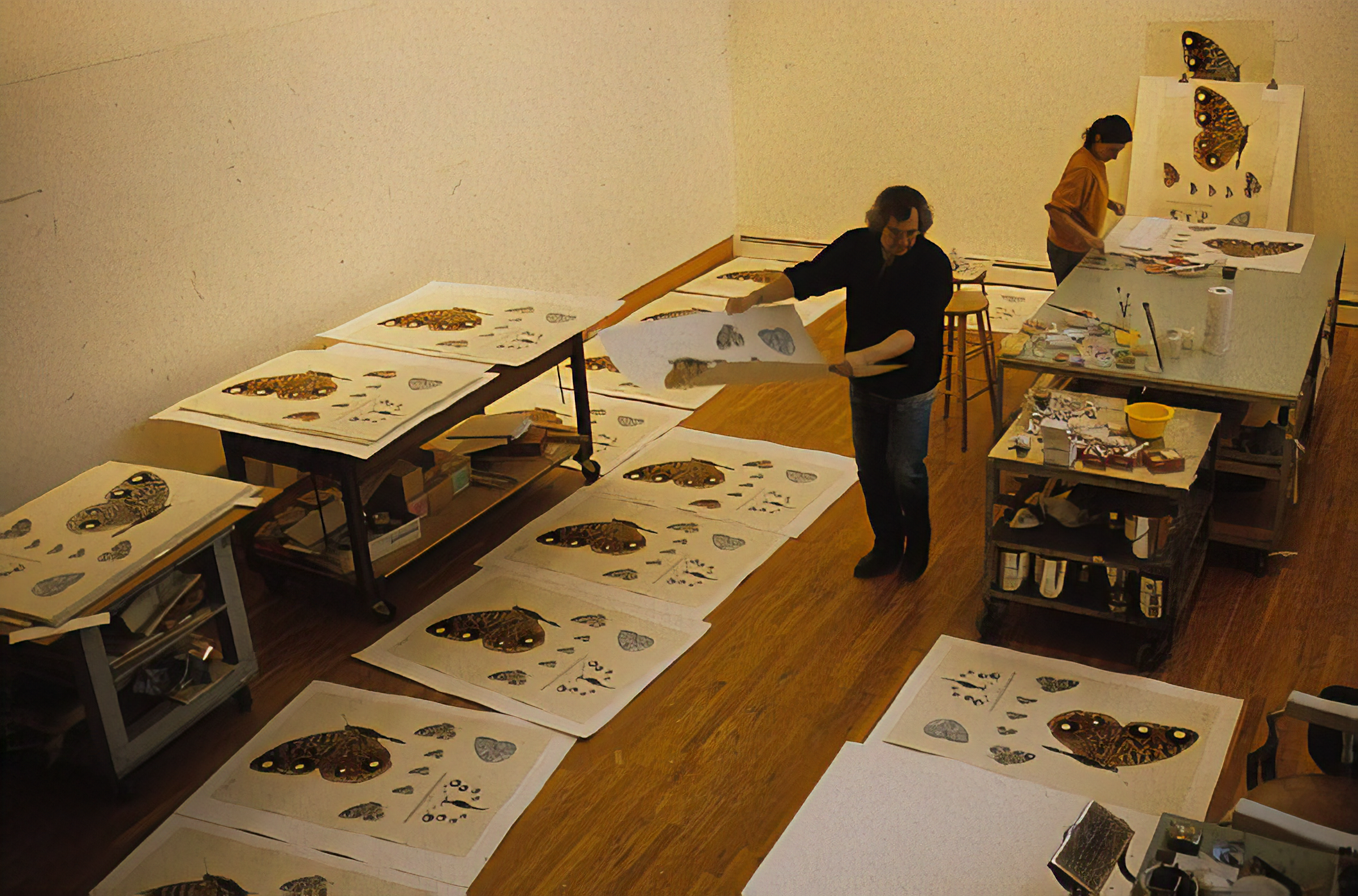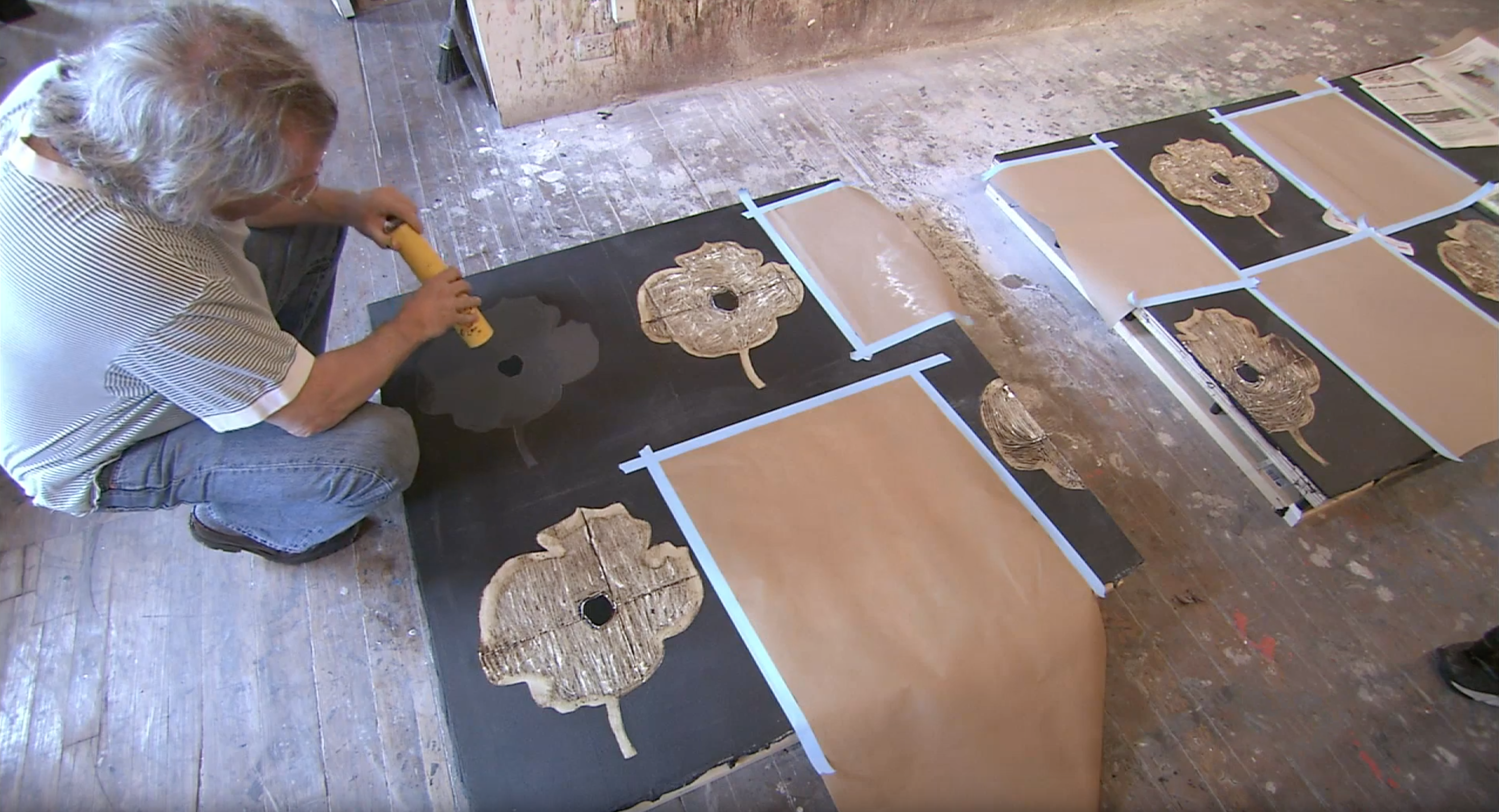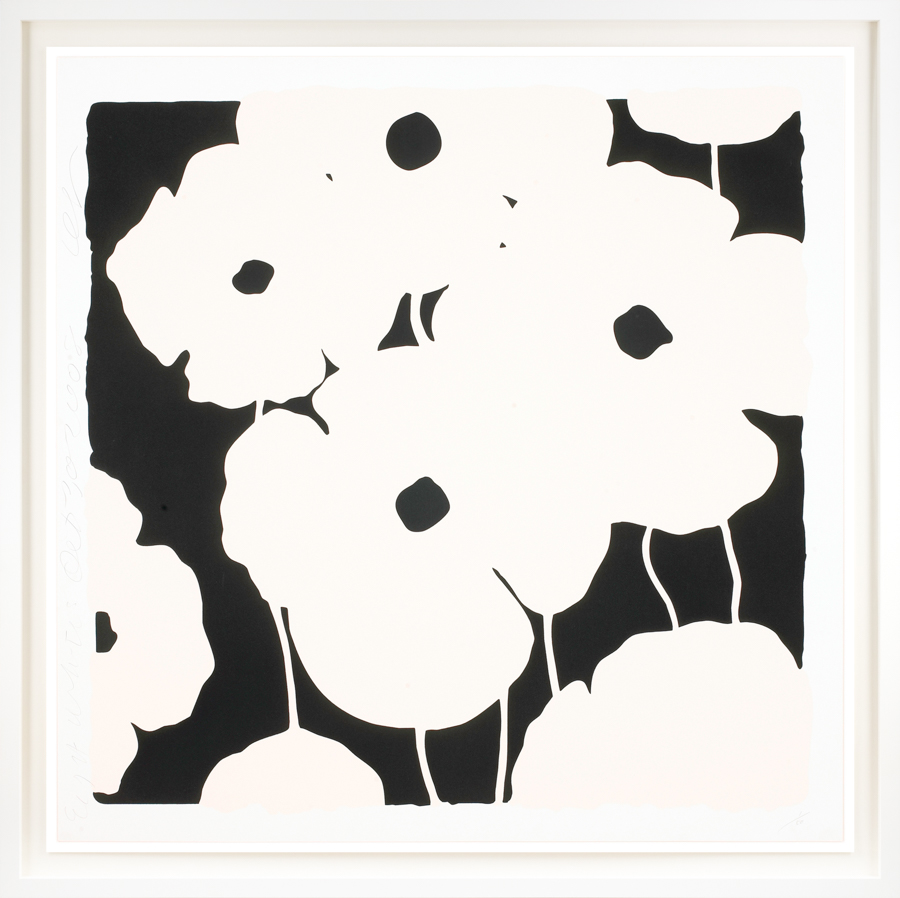Artists have been using screen printing techniques since early in recorded history; The first recorded mention of screen printing dates back as early as 960 AD during the Song Dynasty in China. From there, the technology was adopted by Japan and later Europe. Since its origins, the medium has expanded into various industries and applications, and remains relevant today as an innovative and versatile art form.

The screen printing process is a type of stenciling, wherein the negative space of an image is glued over a tightly-pulled mesh to obstruct ink passing through the screen. Once the ink is pressed on the screen with a squeegee, only the clear areas allow ink to imprint onto the surface. Screen printing has fewer limitations than other forms of printing: it requires only manual pressure and it can be printed on almost any surface with a multitude of inks.
Simple and versatile, the medium allows artists the freedom to reproduce serial works of art, or serigraphs. Its mechanical nature is what first drew famed Pop artist Andy Warhol to the technique, explaining in interviews that,
“The reason I’m painting this way is that I want to be a machine, and I feel that whatever I do and do machine-like is what I want to do.”
The screen printed works differ slightly from registration to registration, offering a touch of human imperfection to each piece.

Similarly, artist Donald Sultan found inspiration in his industrial surroundings during his time working in New York City during the ’70s, crediting silk screening as a process that can separate organic elements from their natural setting:
“The image could be further removed from the natural [environment] by silk screening the image on the [surface] rather than by hand-painting it.”

Donald Sultan often applies flocking, which he refers to as “artificial velvet”, to give works a textured finish. This step in the process adds a human, organic dimension to the industrially-inclined pieces.

“Eight Whites” offers a especially interesting perspective on the concept of subject. The iconic impression of these blown-up, abstracted flowers intrigues the mind with a play between positive and negative space. Sultan’s addition of black flocking lends a textural dimension to this dramatic piece, turning the negative space into “a hole and a volume at the same time.”

For inquiries on our collection of screen prints, please contact the gallery nearest to you.

